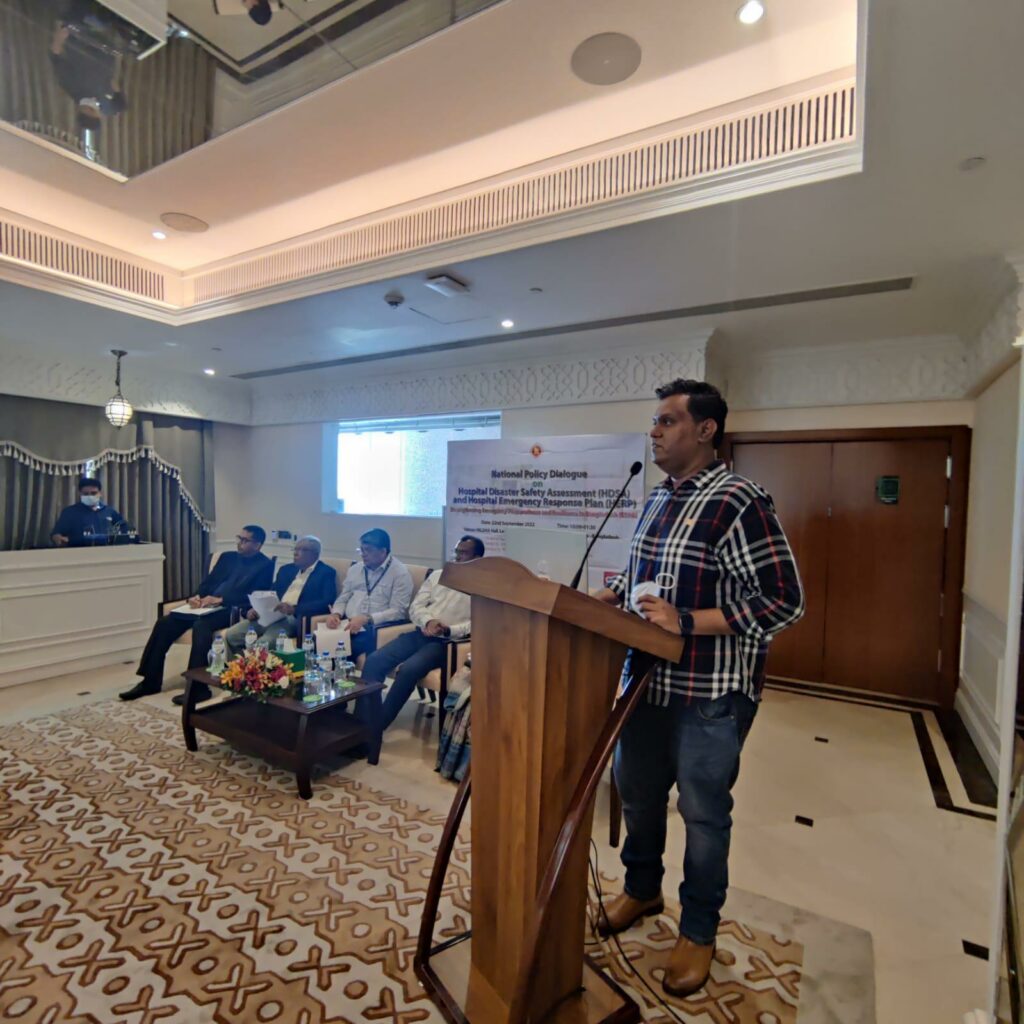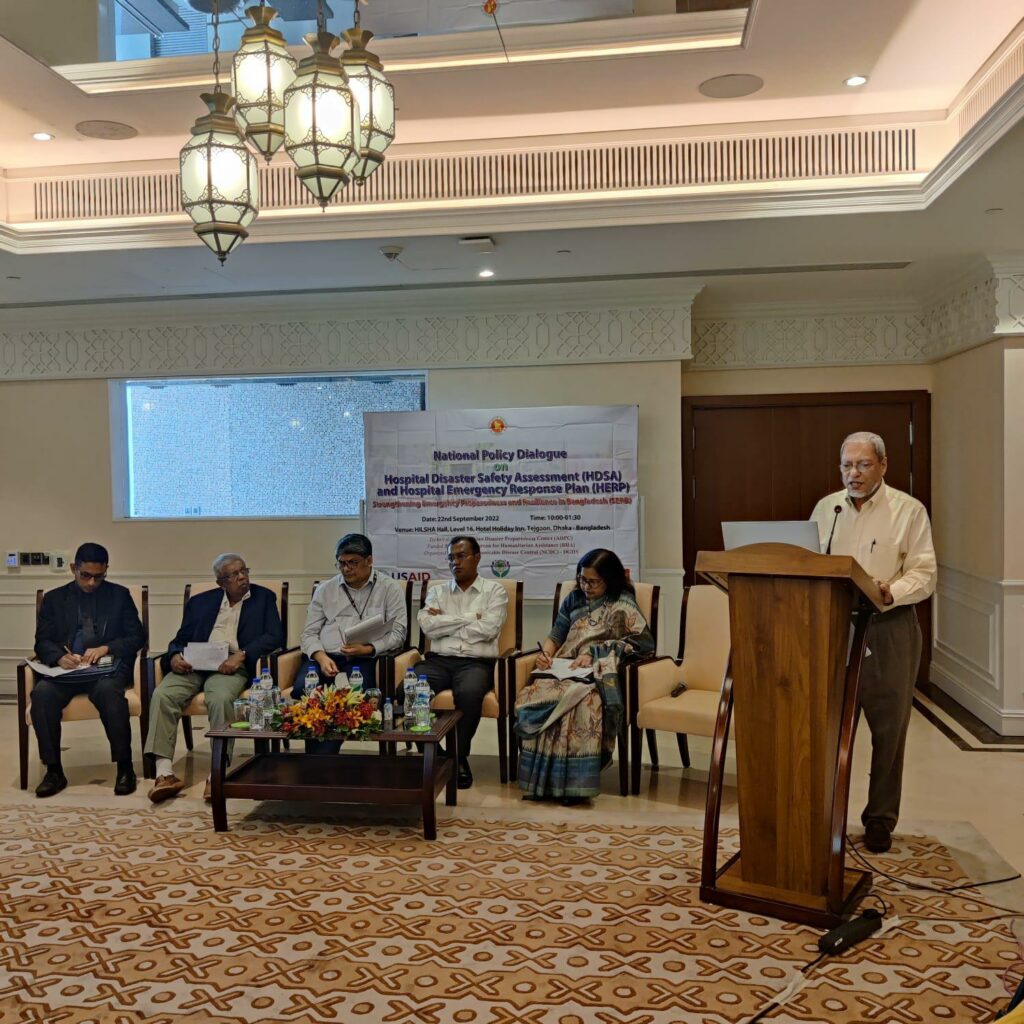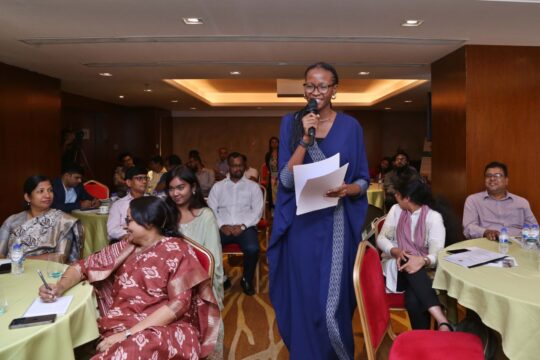Safety assessment and emergency planning for health facilities are essential components in developing disaster-resilient hospitals. A Nation Policy Dialogue (NPD) was organized in Dhaka on 22 September 2022 to explore ways to adopt hospital safety assessment and planning tools in Bangladesh.
Jointly organized by the Directorate General of Health Services (DGHS) and ADPC, the discussion aimed to identify policies to integrate the Hospital Disaster Safety Assessment (HDSA) tool and Hospital Emergency Response Planning (HERP) developed under the SERB program. The contextualized tools have been piloted in three Upazila Health Complexes in Rangamati, Bandarban, and Cox’s Bazar.
Thirteen government officials and other SERB partners joined the conversation to disseminate the findings of HDSA and HERP workshops conducted in the three primary health complexes and formulate a plan to integrate them as national tools for Bangladesh.
The HDSA tool has been conceptualized under the SERB program, which drew inspiration from WHO’s Hospital Safety Index (HSI). Some of the indicators from the HSI tool have been adopted and customized to fit the needs of Bangladesh’s healthcare system. Based on the safety assessment, a hospital emergency response plan is formulated and validated through a simulation exercise to test the plan’s efficacy.
Dr. Rahat Iqbal Chowdhury, Deputy Program Manager (Non-Communicable Disease Control), DGHS, explained how ADPC, with partners, customized the WHO’s HSI to adapt the hospital safety assessment tool, that caters to the healthcare system of Bangladesh.

Mr. Golam Kabir from ADPC presented the findings from the safety assessment and planning tools workshops, piloted in the three target districts of SERB. HDSA assesses health facilities on structural, non-structural, and functional components. He highlighted limitations and resource constraints during the workshops and presented vital recommendations. Some of the suggestions mentioned were:
- Taking urgent and short-term intervention measures according to their safety index,
- Regular training on fire safety, as fire is the most common hazard in hospitals,
- Detailed structural assessments by engineering professionals,
- Regular maintenance of non-structural elements like telecommunication systems, Fire protection, and patient security,
- Strengthening hospital surge capacities to accommodate the surge in victim influx during emergencies,
- Routine emergency and disaster management training for continuous capacity development.

The presentation was followed by an open discussion on the challenges of scaling out the tools and exploring ways to apply them as national tools in Bangladesh.
Key officials from the panel made the following recommendations:
- Increase the sample size to add more diversity in disaster scenarios and develop a more comprehensive data set for the next stage of SERB,
- Further contextualization of the tool is needed for a multi-hazard context in primary, secondary, and tertiary hospitals,
- Simplify the assessment tool to reduce the spent by the hospitals,
- In addition to hospital staff, engage engineers in the assessment team (civil, geotechnical, electrical, etc), to help correctly assess the structural safety of health facilities,
- Involving the private sector to reproduce the tools in the private health care system,
- Replicating the SERB model in other vulnerable areas of Bangladesh,
- Routine HERP simulation for continuously updating the emergency plan and corrective action planning.


